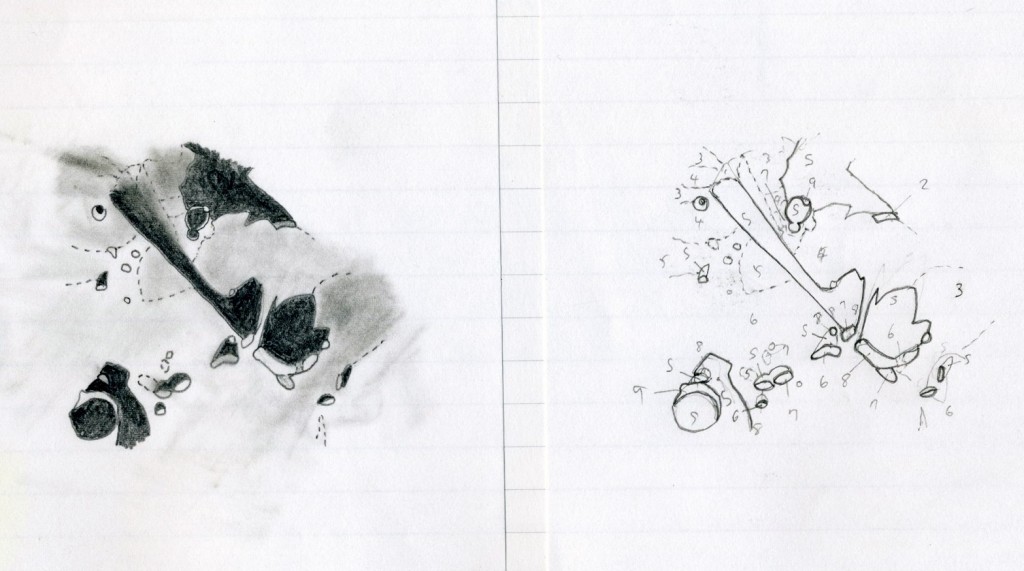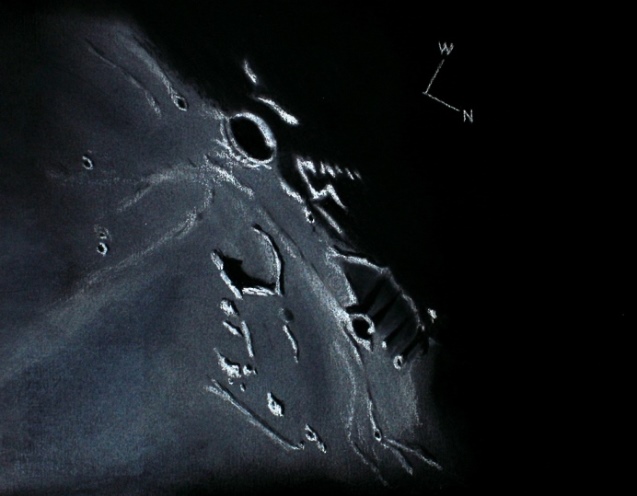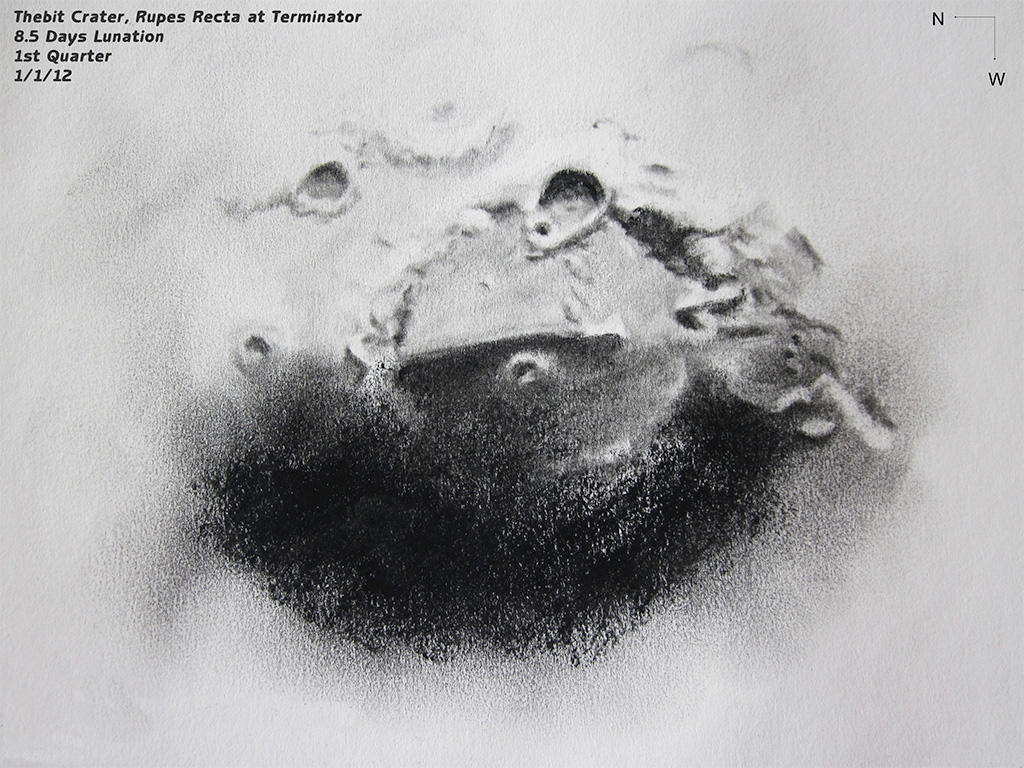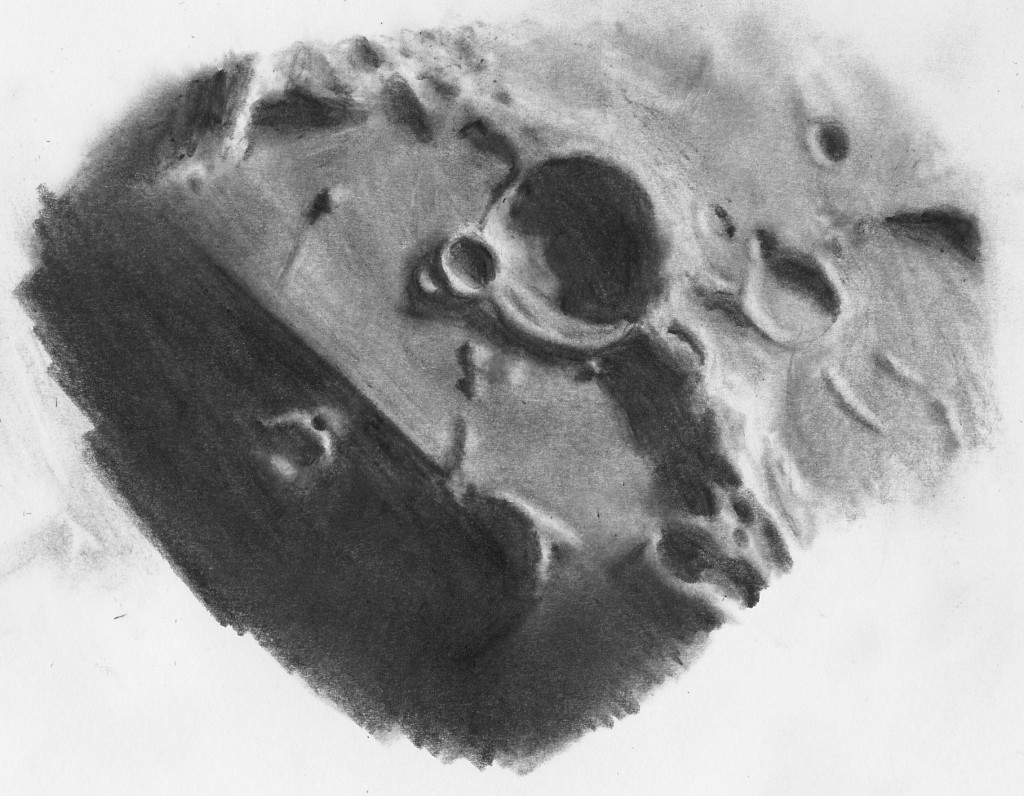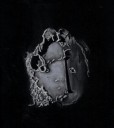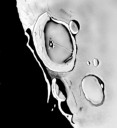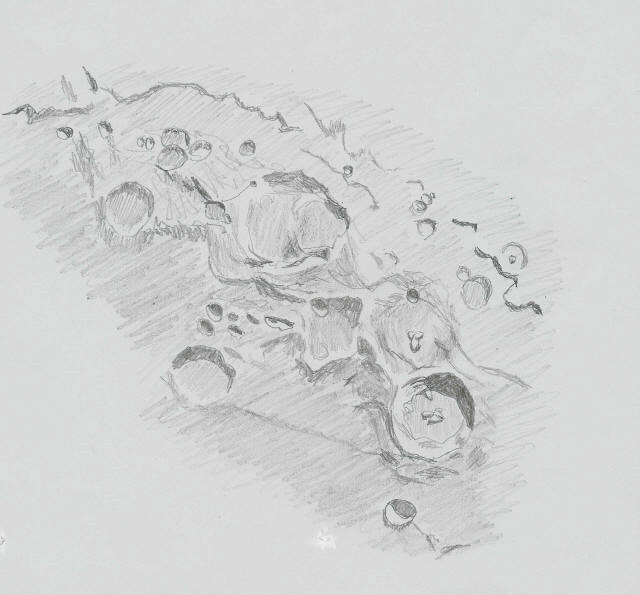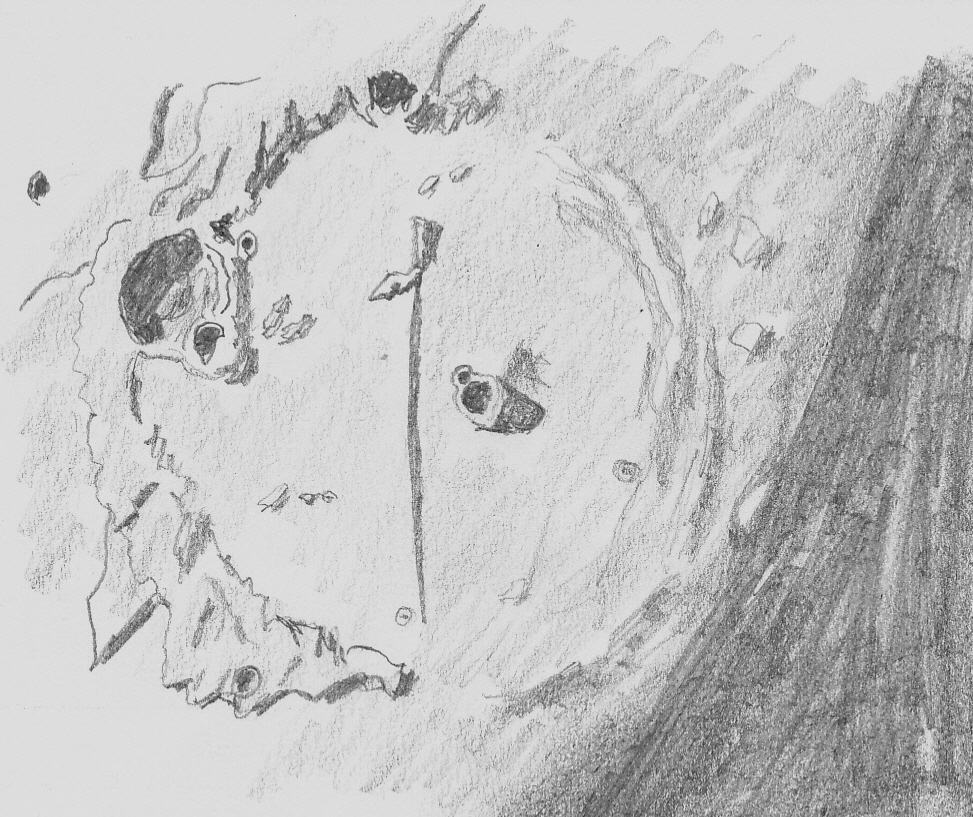
Ancient Thebit, Rupes Recta, Thebit, Birt, Promontorium Taenarium
Move mouse over image to view labels.
Object Name: Ancient Thebit, Rupes Recta, Thebit, Birt, Promontorium Taenarium
Object Type: Lunar crater, lunar graben, lunar dorsum.
Location: York, UK
Date: 3rd December 2011
Media: graphite pencil, white paper
The straight wall, or Rupes Recta, is the best example of a simple fault on the moon, and visible even with a small scope. It’s 300m high and 114km long. It lies radial to the Mare Imbrium impact basin, in line with a lot of nearby sculpture from that event, but that is probably just coincidental. It also lies in line with the edge of the Mare Nubium basin and cuts across the floor of an ancient crater lying across the edge of that basin, known as Ancient Thebit, whose eastern edge marks the edge of Mare Nubium and western edge is marked by wrinkle ridges in the mare. Rupes Recta marks where the edge of Mare Nubium would have been if Ancient Thebit had never formed. The sequence of events is therefore likely to have been:
1. Nubium impact occurs, forming Nubium basin (4.55-3.92 billion years ago).
2. Ancient Thebit impactor hits edge of Nubium Basin.
3. Nubium basin floods with lava forming Mare Nubium (approx 3.3 billion years ago according to crater counts), flooding Ancient Thebit.
4. Nubium basin slumps in the centre, forming Rupes Recta along its former edge.
I failed to see Rima Birt, a lava rille that travels from a dome on the northern border of ancient Thebit to crater Birt. However, seeing was not good. I did nonetheless make out the dome that marks its origin, which I had not seen before.
